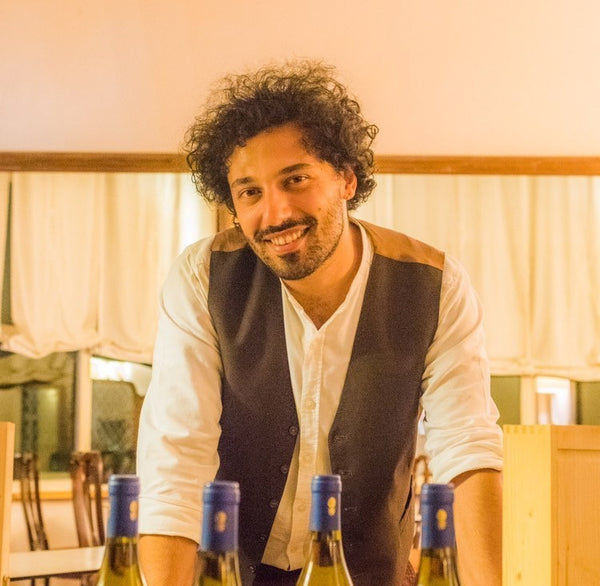Words are important and terminological precision too, especially if we are talking about Chianti. Yes, because it often happens to hear inexperienced consumers, but also insiders, and this is much more serious, to name a bottle of “Chianti Classico” simply “Chianti”, omitting the “Classico” attribute. You could say an insignificant oversight, not really because “Chianti” and “Chianti Classico” are not the same wine but two distinct DOCGs with different specifications and characteristics.
We will shed some light, illustrating what distinguishes these two very famous labels. In the end you will have no more doubts and you will be able to use the two denominations in the correct way, correcting, perhaps, those who still confuse them. Because words are important!
Chianti and Chianti Classico: a bit of history
24 September 1716, the Grand Duke Cosimo III de ‘Medici issued the Call “Above the Declaration of the Borders of the four Regions Chianti, Pomino, Carmignano and Val d’Arno di Sopra” to define the territories within which the wines of the areas mentioned above.
Shortly thereafter, Cosimo III also promulgated a second decree to set up special “Congregations for the supervision of production”, a control institute for compliance with the production and marketing standards for these wines.
Why all this attention?
Because the wines of these areas were in great demand abroad, especially at the main European courts, and for this reason they were some of the few products that could be exported outside the Grand Duchy of Tuscany.
It is therefore clear that their importance in commercial and economic terms led Cosimo III to protect himself, establishing precise rules aimed at safeguarding their quality and uniqueness. In the section dedicated to Chianti, the edict established that this wine could only be produced in the area between the cities of Florence and Siena, specifically: “… from Spedaluzzo to Greve; from there to Panzano, with all the Podesteria of Radda, which contains three thirds, namely Radda, Gajole and Castellina, reaching the border of the State of Siena ….. “. At the time, therefore, only Chianti existed, produced in the region of the same name. The need to distinguish the two denominations, Chianti and Chianti Classico, emerged only later. In the twentieth century, the demand for Chianti wine was such that, in order to satisfy the demand of the national and international market, it began to be produced in neighboring areas, outside the boundaries established by the edict. The wine produced was initially marketed under the name of “Chianti use”, then with that of “Chianti”. A sort of plagiarism from which the producers of the
original area decided to protect themselves, first by founding a Consortium to defend “their” wine from imitations and then fighting to obtain a distinctive denomination. Efforts rewarded in 1932 when a ministerial decree recognised the wine produced in the original area of Chianti, that established by the Medici decree, the possibility of using the “Classic” attribute, differentiating itself from the Chianti of the neighboring areas. It was therefore on this occasion that the Chianti Classico appellation appeared for the first time. And after over sixty years of legal battles, in 1996, the “Chianti Classico” achieved full independence and obtained the recognition of D.O.C.G. independent from that of the “Chianti”. To make the concept even clearer, we tried to reproduce in a rather simple way the evolution of the Chianti denomination from the edict of Cosimo III to the decree of 1932.

What is Chianti Classico
As can be seen from the short story we have told above, the most obvious, but not the only, difference between “Chianti” and “Chianti Classico” is geographical and concerns its production area.
For this reason the Chianti Classico can be defined as that wine produced within some municipalities located between the provinces of Florence and Siena and which represent the “original” area of Chianti, the one identified by the edict of Cosimo III and which, once, it was simply called Chianti.
The municipalities concerned are: Castellina in Chianti, Gaiole in Chianti, Greve in Chianti, Radda in Chianti and part of the municipalities of Barberino Val d’Elsa, Castelnuovo Barardenga, Poggibonsi, San Casciano in Val di Pesa and Tavernelle Val di Pesa.
What is Chianti?
Similarly we can say that the wine now called “Chianti” is not derived from the area historically defined as “Chianti”, but from the areas adjacent to the original one, that is, those outside the boundaries established by the edict.
These are some territories of the provinces of Arezzo, Florence, Prato, Pisa, Pistoia and Siena and which surround the areas of Chianti Classico.
In other words, the “Chianti Classico” is the original “Chianti”, the historical one; while the “Chianti” of today is that of the neighboring areas.
We must underline another aspect. The distinction between Chianti and Chianti Classico is not only of a geographical nature and does not concern only the production area.
Since 1996 the two wines are completely autonomous and each has its own, independent, production disciplinary. These are two excellent denominations that make the most of the characteristics of their respective territories.
The differences are therefore more numerous than one might think.
The most important, for example, concerns the blend: both wines are made mainly from Sangiovese grapes but Chianti Classico with a percentage from 80% to 100%, for the remaining part authorized red berried grapes can be used, while Chianti from 70% to 100%, with the possibility of using white berried grapes for a maximum of 10%.
Other distinctions concern the rules for viticulture and winemaking, but above all the characteristics for consumption.
For this last question, we give you some advice: when you want to drink Chianti, remember this distinction, buy a Chianti Classico and a Chianti, let us know how they look like you and which one you prefer…
DRINK IT, LOVE IT….WINE IT!
By Riccardo Gavelli | September 12th, 2020




